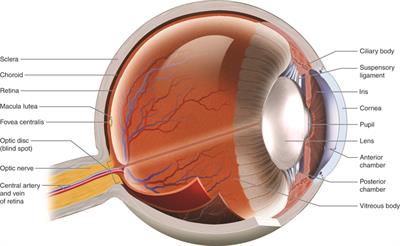
PUMPA - SMART LEARNING
எங்கள் ஆசிரியர்களுடன் 1-ஆன்-1 ஆலோசனை நேரத்தைப் பெறுங்கள். டாப்பர் ஆவதற்கு நாங்கள் பயிற்சி அளிப்போம்
Book Free DemoThe transparent layer cornea bends the light rays through the pupil located at the centre part of the Iris. The adjusted light passes through the eye lens. The eye lens is convex in nature. So, the light rays from the objects are converged, and a real and inverted image is formed on the retina. Then, the retina passes the received real and inverted image to the brain through optical nerves. Finally, the brain senses it as an erect image.
Power of Accommodation:
The ability of the eye lens to focus nearby as well as distant objects is called the power of accommodation of the eye. This is achieved by changing the focal length of the eye lens with the help of ciliary muscles. The eye lens is made of a flexible, jelly-like material. By relaxing and contracting the ciliary muscle, the curvature and hence the focal length of the eye lens can be altered. When we see distant objects, the ciliary muscle relaxes and makes the eye lens thinner. This increases the focal length of the eye lens. Hence, the distant object can be clearly seen. On the other hand, when we look at a closer object, the focal length of the eye lens is decreased by the contraction of the ciliary muscle. Thus, the image of the closer object is clearly formed on the retina.
Persistence of vision:
If the time interval between two consecutive light pulses is less than 1.16 seconds; the human eye cannot distinguish them separately. It is called persistence of vision. The minimum distance required to see the objects distinctly without strain is called the least distance of distinct vision. It is called a near point of the eye. It is 25 cm for the normal human eye.

Human eye
The far point of the eye is the maximum distance at which the eye can clearly see objects. The normal eye sees infinity.